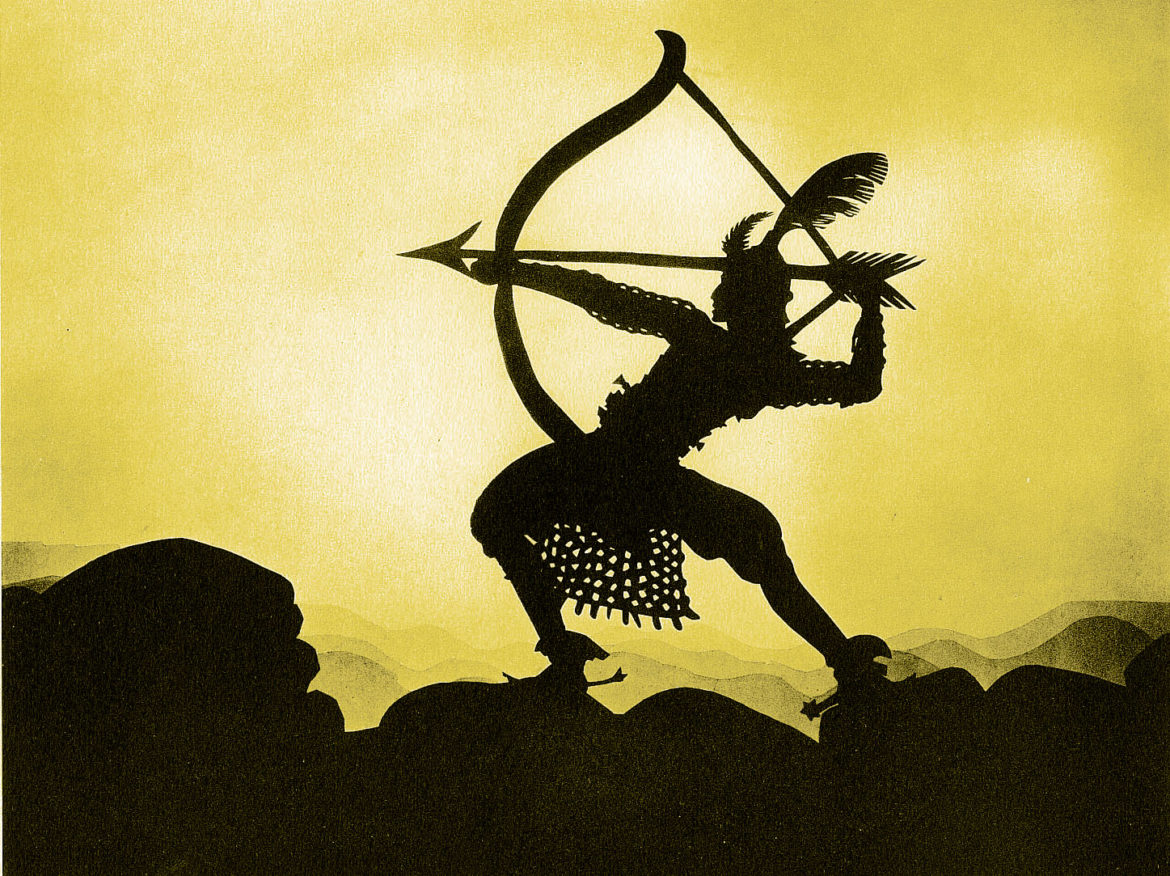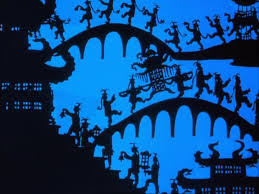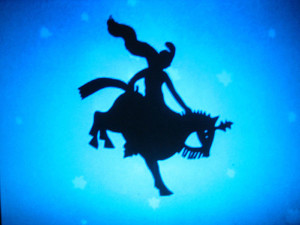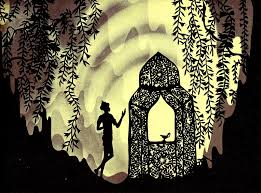Part of an ongoing effort to watch a set of films from non-White, non-U.S., non-male, and/or non-straight filmmakers and depart a little from the Western canon. The intro and full list can be found here.
For many of of us, I’d wager, animation starts with Walt Disney. But the first animated feature that still survives is German silhouette artist and director Lotte Reiniger’s The Adventures of Prince Achmed (1926), anticipating Disney by a full decade. What’s more, her Prince Achmed used a version of the multiplane camera, deployed to memorable effect in 1937’s Snow White and the Seven Dwarfs 11 years later. Watching the film now, it’s a staggering, visually sumptuous 65 minutes — it’s hard to watch it at all without marveling at the sheer amount of work it required. Lit from behind and filmed from overhead, with intricate cut-outs and wire mechanisms to control their movement, it’s a miraculous achievement.
A pastiche tale assembled from One Thousand And One Nights, Reiniger’s film combines the story of Pari Bonu (beloved by Prince Achmed), who is kidnapped/rescued from Wak Wak (the land of the demons), and the likely more familiar narrative of Aladdin and the magic lamp. These two stories run side by side, and then intersect at the end. The plot is driven by the (somewhat troubling) narrative device of the African magician, who lusts after the Caliph’s daughter, and his nemesis, The Witch of the Flaming Mountain, who sides with the two pairs of young lovers and helps deliver them to safety.
It’s actually less confusing than it sounds, but it’s safe to say that the film’s notion of narrative coherence isn’t exactly the same as today’s.
We begin with the magician, the most powerful in the land. He creates a flying horse, who can be controlled almost mechanically by his mane and some sort of lever towards his tail. The magician presents his invention to the Caliph, who wants to buy it badly. Sneakily, the magician rejects all amount of treasure for its sale, and tricks the Caliph into trading his daughter Dinarsade. The scene is played with real pathos, as Achmed, her brother, tries to intervene. Unfortunately, he ends up on the flying horse, with no way of controlling his direction. All of this is largely conveyed without title cards — the jerky, sometimes grieving motions of the characters convey it all.
So Achmed’s adventures begin. He flies (beautifully) through the clouds before figuring out the horse controls, and descends back to earth, landing on an island in Wak Wak. He stumbles about, and the interiors and settings are gorgeous. In a reminder that animation was not always intended for the littlest among us, he finds a group of sexy ladies who greet him as “attractive stranger,” and proceed to fight for his attention. He flees, only to find Pari Banu (who he immediately and somewhat creepily adores) and her consorts bathing on a different island. It’s pretty sexy silhouette action over here.
But the magician steals her away after Achmed gets entangled with a snake, and she’s deposited across the world, as tribute to the Emperor of China (after the very existence of the African Magician, this is the first time race really shoulders its way into the film, pretty offensively. It’s not the last.). Achmed has been trapped under a boulder in a flaming mountain, but it turns out the Witch who runs it is mortal enemies with the Magician. They arm themselves and prepare for war and rescue.
Here, we somewhat awkwardly shift to the Aladdin story. Achmed saves him, and Aladdin launches into a flashback about where he’s been. It turns out he’s in love with Dinarsade, who, through magic we don’t need to go into, has been vanished, along with the palace he built for her. The two band together and, with the help of the Witch and the hordes of genies in Aladdin’s lamp (imagined as essentially good vibes), they vanquish the magician, reunite the lovers, and restore order to this chaotic world.
The story’s parts don’t always make a lot of sense, and there’s a definite sense that they are being smushed together to make a feature out of shorts. But it never matters because the images are so mind-boggling. Reiniger and her team — including a number of avant garde animators in Germany at the time — construct elaborate, beautiful scenes.
The idea that each of these cut-outs requires manipulation to simulate movement, not to mention the incredible amount of care taken in the cut-out itself, is staggering. Watching it, I had the distinct sense of what it must’ve felt like in the earliest days of cinema — the feeling that anything is possible. There’s a kid-like wonder in just seeing the silhouettes and the color tinting. After all, kids have been making shadow puppets for well on several thousand years now, so it taps into something primal. There’s a distinct sense throughout of, “How did they do that?” One of the greatest aspects of all early cinema is that sense of wonder, and The Adventures of Prince Achmed delivers it over and over.
There are certainly aspects of the film that should give us pause: the hook nose and Nosferatu-like nails of the villains, the evilly boilerplate African magic man, the caricatures of the Chinese, the fact that several people involved in the production would later go on to contribute to Riefenstahl’s propaganda work in the coming years. It’s impossible to ignore, even though Reiniger and her crowd were by and large left-wing, and she and her husband bounced around Europe for years, in semi-exile. The iconography is hard to miss.
But what lasts in the film is the fluidity of the animation, the gorgeously backlit silhouettes, and the extreme amount of love and attention paid to the images and figures themselves. And, of course, the fact that a female animator and director laid the groundwork for many of the techniques developing at the time, which is something I didn’t know before watching this.
Aesthetically, The Adventures of Prince Achmed is simply incredible, and Reiniger should be celebrated as much as Disney. These are stunning, bewilderingly labor-intensive images from the dawn of feature-length cinema.
Next up: Teinosuke Kinugasa’s Crossroads (1928)






